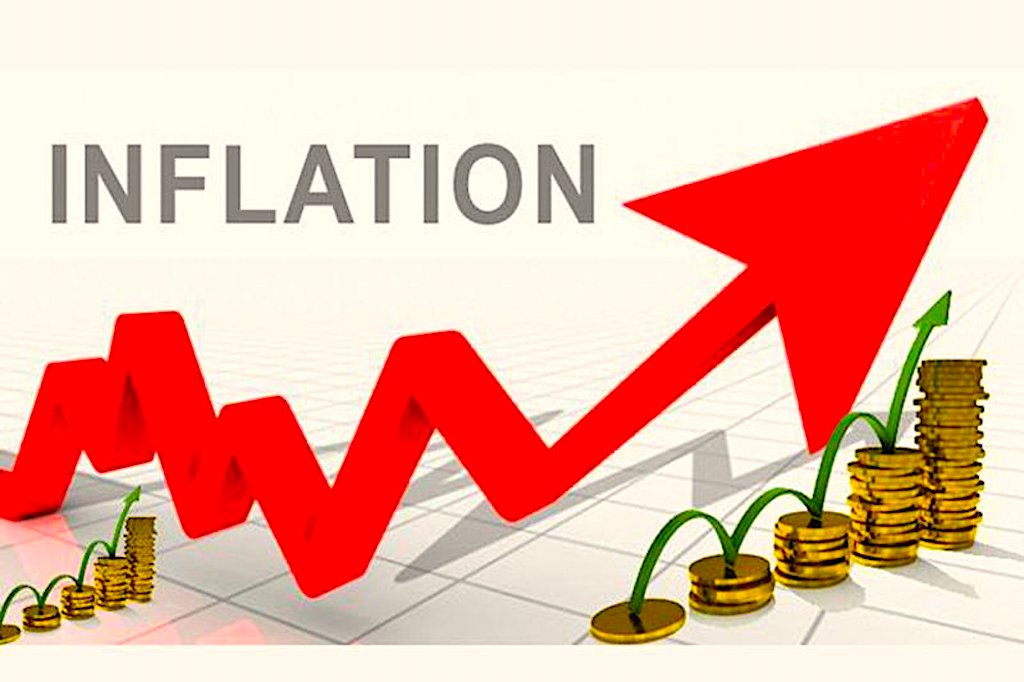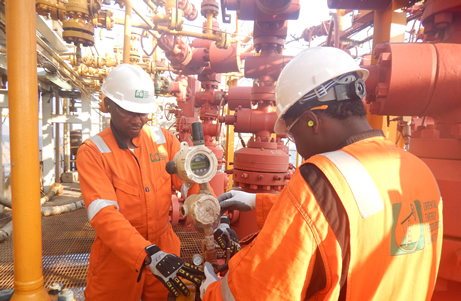Nigeria’s headline inflation rate eased to 18.02 per cent in September 2025, marking a significant moderation from 20.12 per cent recorded in August, according to the latest data from the National Bureau of Statistics (NBS).
The drop represents a 2.1 per cent month-on-month decline and the first time since 2022 that the country’s inflation rate has fallen below the 20 per cent threshold.
The report showed that on a year-on-year basis, the September 2025 headline inflation rate was 14.68 percentage points lower than the 32.70 per cent recorded in the same month of 2024.
The decline, partly attributed to a change in the base year (November 2009 = 100), indicates that price pressures have eased considerably compared to the same period last year.
On a month-on-month basis, inflation also decelerated slightly to 0.72 per cent in September from 0.74 per cent in August, implying a slower rate of increase in the general price level.
The Consumer Price Index (CPI) rose to 127.7 points from 126.8 points in August, reflecting a modest 0.9-point increase.
The NBS further disclosed that the average annual inflation rate for the twelve months ending September 2025 stood at 23.46 per cent, representing an 8.27 percentage-point decrease compared with 31.73 per cent in the corresponding period of 2024.
Food inflation, which has been the main driver of headline inflation, slowed dramatically to 16.87 per cent in September 2025 from 37.77 per cent in the same period of 2024, a 20.9 percentage-point drop.
The agency attributed this decline to the change in the base year and a reduction in the average prices of key food items such as maize, garri, beans, millet, potatoes, onions, eggs, tomatoes, and fresh pepper.
On a month-on-month basis, food inflation turned negative at -1.57 per cent in September, compared to 1.65 per cent in August, underscoring easing food costs in some regions.
The average annual rate of food inflation for the twelve months ending September 2025 was 24.06 per cent, 13.47 percentage points lower than 37.53 per cent recorded in September 2024.
Across states, Ekiti (28.68 per cent), Rivers (24.18 per cent), and Nasarawa (22.74 per cent) recorded the highest year-on-year increases in food inflation, while Bauchi (2.81 per cent), Niger (8.38 per cent), and Anambra (8.41per cent) posted the slowest rises.
On a month-on-month basis, Zamfara (15.62 per cent), Ekiti (12.77 per cent), and Sokoto (12.55 per cent) led the increases, while Akwa Ibom (-12.97 per cent), Borno (-12.95 per cent), and Cross River (-10.36 per cent) saw notable declines.
Core inflation, which excludes volatile agricultural and energy prices, also eased to 19.53 per cent year-on-year in September 2025 from 27.43 per cent in September 2024, a 7.9 percentage-point drop.
On a month-on-month basis, core inflation stood at 1.42 per cent, slightly lower than 1.43 per cent in August.
The twelve-month average core inflation rate was 22.39 per cent, down from 25.64 per cent in September 2024.
The NBS report also showed that Adamawa (23.69 per cent), Katsina (23.53 per cent), and Nasarawa (22.29 per cent) recorded the highest all-items inflation on a year-on-year basis, while Anambra (9.28 per cent), Niger (11.79 per cent), and Bauchi (12.36 per cent) posted the lowest.
Month-on-month, inflation was highest in Zamfara (9.36 per cent), Adamawa (8.15 per cent), and Nasarawa (7.49 per cent), while Niger (-8.14 per cent), Oyo (-5.56 per cent), and Bayelsa (-4.61 per cent) saw declines.
However, the Centre for the Promotion of Private Enterprise (CPPE) has commended the sustained moderation in Nigeria’s inflation rate, describing it as a positive signal of improving macroeconomic stability and policy traction.
According to the organisation’s policy brief on September inflation, headline inflation eased to 18.02 per cent in September 2025 from 20.12 per cent in August, marking the continuation of a downward trend that began earlier in the year.
The report noted that month-on-month inflation also slowed slightly from 0.74 per cent to 0.72 per cent, while food inflation dropped sharply to 16.87 per cent from 21.87 per cent in the previous month. Core inflation similarly moderated to 19.53 per cent from 20.33 per cent. These developments, the CPPE said, point to easing inflationary pressures and suggest that recent policy interventions are beginning to yield tangible results.
Despite these gains, the organisation warned that inflation remains high, continuing to erode household purchasing power, weaken consumer confidence, and undermine real incomes. It stressed that the progress made so far must be consolidated through decisive and well-targeted policy actions to prevent a reversal of the trend.
The CPPE identified several factors driving the recent disinflation, including improved agricultural output due to seasonal harvests, the base effect from high 2024 inflation rates, relative stability in the exchange rate, and tighter macroeconomic policies. The group acknowledged that monetary and fiscal coordination had contributed to moderating price pressures, but cautioned that structural challenges—particularly those linked to energy, logistics, and security, still pose significant risks to sustained price stability.
In its analysis, the organisation highlighted persistent cost pressures across key sectors such as food, transport, energy, housing, education, and healthcare. It noted that insecurity in farming regions, high transport costs, unreliable electricity supply, and multiple levies across states continue to elevate the cost of production and distribution. These sectors, which account for the bulk of household spending, have sustained inflationary pressures despite the recent moderation in headline numbers.
To consolidate the disinflation momentum, CPPE called for targeted reforms to address structural bottlenecks. It urged government to prioritise food security by improving security in farming communities, expanding irrigation and storage facilities, and supporting mechanisation and access to inputs. The think tank also advocated for reduced logistics and transport costs through the rehabilitation of key road corridors, elimination of informal checkpoints, and better intermodal connectivity.
Furthermore, CPPE recommended transitional energy support schemes for productive sectors, increased investment in renewable and off-grid power, and improved efficiency within the electricity value chain to lower tariffs and enhance supply reliability. It also emphasised the need to expand access to affordable finance for small and medium-sized enterprises (SMEs) and to reform trade logistics through digitalisation, port charge harmonisation, and greater transparency in the port value chain.
On the macroeconomic front, the organisation advised the authorities to maintain exchange rate stability through credible, market-driven mechanisms, strengthen fiscal-monetary coordination, and guard against fiscal slippages that could reignite inflationary pressures.
Concluding its policy brief, the CPPE described the ongoing disinflation as a welcome development that reflects improving fundamentals, but cautioned that the cost-of-living crisis remains severe, especially for low- and middle-income households. It called for the next phase of reforms to focus on welfare-oriented measures and structural cost reductions that deliver real relief to citizens.
According to Director and Chief Executive Officer of the CPPE, Dr. Muda Yusuf, “Business confidence is rising, but consumer confidence remains fragile. Sustaining this momentum requires consistency, coordination, and reforms that address the structural costs of doing business.” He added that with the right mix of policies, Nigeria could achieve a stable single-digit inflation rate in the medium term, anchoring growth, improving welfare, and restoring confidence in the economy.
Meanwhile, Chief Executive Officer of Financial Derivatives Company (FDC) Limited, Bismarck Rewane, had projected that inflation could fall further to 18 per cent by November 2025.
Speaking at the October edition of the Lagos Business School (LBS) Breakfast Session, Rewane attributed the anticipated moderation to increased imports ahead of December’s festive demand and stronger supply-side responses in key sectors.
Rewane described Nigeria’s economic recovery as “authentic,” highlighting a real GDP growth rate of 4.23 per cent in Q2 2025, the highest in four years since Q2 2021 when GDP grew by 5.01 per cent. He, however, cautioned that a ceasefire in Gaza could lower global oil prices, potentially widening Nigeria’s fiscal deficit.
“At $60 per barrel, Nigeria’s fiscal deficit could climb towards 4.5–5 per cent of GDP,” he warned.
Nigeria’s 2025 budget is benchmarked at $75 per barrel with a crude oil production target of 2.06 million barrels per day (mbpd). However, as of October 13, crude oil traded at $63.60 per barrel, while output stood at 1.58 mbpd, below projections.
Data from the Debt Management Office (DMO) show that the country’s total public debt rose to ₦152.40trn ($99.66bn) as of June 30, 2025, an increase of ₦3.01trn from the ₦149.39 trillion ($97.24bn) recorded in March. Nigeria spent $932.1m and ₦1.7trn on external and domestic debt servicing respectively in the second quarter of 2025.
Rewane noted that out of 46 tracked economic activities, 32 expanded, 10 slowed, and 4 contracted, with industry growing by 7.45 per cent, services by 3.94 per cent, and agriculture by 2.82 per cent, signalling a broad-based recovery despite prevailing fiscal pressures.





